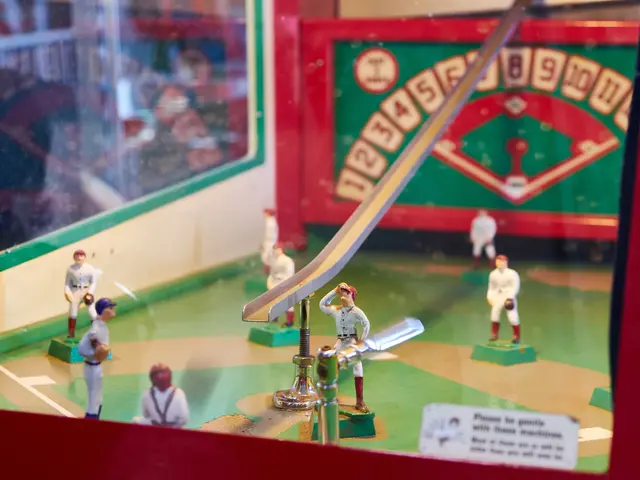Guidelines for Creating a Homemade Moss Pole for Indoor Plants: The Optimal Method for Assisting Monstera, Pothos, and Various Other Species
Creating a DIY Moss Pole for Houseplants: A Step-by-Step Guide
For indoor plant enthusiasts, providing a suitable vertical surface for climbing plants can significantly enhance their growth and appearance. Here's a simple guide on how to make a moss pole for your houseplants.
Materials Needed: - Sphagnum moss - A sturdy base, such as PVC pipe, wire, or mesh - Securing tools like zip ties, wire, electrical tape, fishing line, or cord - A container for your plant
Step 1: Soak the Sphagnum Moss
Begin by soaking the sphagnum moss in water until it becomes fluffy and damp. This moss retains moisture, which aids aerial roots in attaching and growing.
Step 2: Form the Pole Structure
Next, create the pole structure using the chosen material. For larger plants, mesh can be formed into a thicker pole filled with moss inside for extra support.
Step 3: Attach the Moss
Attach the damp sphagnum moss to the structure. This can be done by filling the inside of the mesh with moss or wrapping the moss around the exterior of the pipe or wire framework.
Step 4: Secure the Moss
Secure the moss to the pole using the chosen securing tools. This will hold the moss firmly in place.
Step 5: Insert the Moss Pole
Finally, insert the moss pole deeply into the plant’s pot for stability and to prevent tipping as the plant climbs.
Creative touches like pipe end caps or decorative cords can be added to improve durability and appearance.
Creating a Mesh Moss Pole
For larger plants or outdoor containers, a mesh moss pole can be an excellent choice. To make one, cut a piece of mesh, fill it with damp sphagnum moss, and secure it with zip ties or wire.
Supporting Climbing Plants
A moss pole provides a natural support for vining and climbing houseplants, offering a more suitable alternative to synthetic stakes or plastic trellises. To secure the plant's vines, use soft twine or plant tape.
Benefits of a Moss Pole
Moss poles encourage epiphytic plants to grow beneficial aerial roots, similar to how they behave in rainforests. Adding a moss pole to a plant's container can lead to noticeable improvements in both health and appearance for climbing houseplants.
Mesh moss poles work well for oversized houseplants, outdoor containers in warm climates, and supporting multiple vines in one pot. Remember to insert the finished mesh moss pole deep into a sturdy pot to prevent tipping, and optionally, wrap the outside of a mesh moss pole with additional moss for added support.
By following these steps, you'll be well on your way to helping your climbing houseplants reach their full potential and creating a beautiful vertical garden in your home.
[1] Moss Poles for Houseplants: A Comprehensive Guide. (2021). Retrieved from https://www.gardeningknowhow.com/houseplants/houseplant-care/houseplant-moss-poles.htm
[2] How to Make a Moss Pole for Houseplants. (2020). Retrieved from https://www.thespruce.com/how-to-make-a-moss-pole-for-houseplants-1902838
[4] Moss Poles: A Vertical Support for Climbing Houseplants. (2020). Retrieved from https://www.hunker.com/13411666/moss-poles-a-vertical-support-for-climbing-houseplants
Here are two sentences that use the words 'lifestyle' and 'home-and-garden':
- Creating a vertical garden using moss poles for climbing houseplants can significantly enhance the aesthetic appeal of your home and lifestyle.
- For home-and-garden enthusiasts who enjoy houseplants, a DIY moss pole can provide a natural, functional, and stylish addition to their indoor living space, thereby contributing to a more enjoyable lifestyle.








